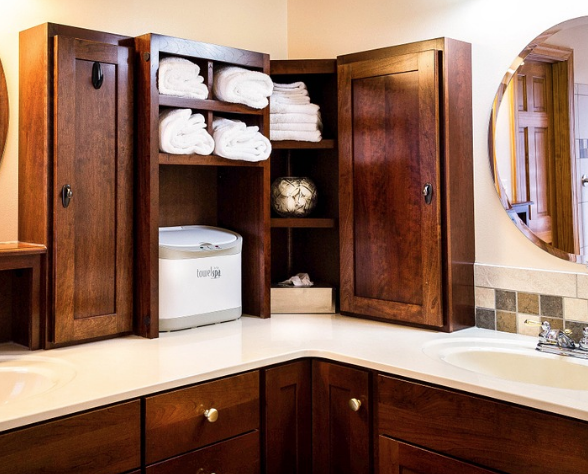As a homeowner, you might be wondering about architectural millwork as you look towards remodeling or renovating your space. While architectural millwork can cover anything from a freestanding rolling kitchen island to exquisite ornamental moldings, there are distinct characteristics that make architectural millwork unique.
Architectural Woodwork vs. Architectural Millwork
You might be confused when you see the term “architectural woodwork” used instead of “architectural millwork”. In general, architectural woodwork deals with built-in products made of wood. These are installed in the home and can refer to things like residential and commercial cabinetry, baths, offices, ornamental moldings, and closets. This is often custom work, requiring the eye of a designer and professional.
Architectural millwork, in contrast, can refer to materials that are not necessarily built-in. Some of these can be stock products or products that you purchase in a box. These items are often found in a big box store or hardware retailer. Many of these products are manufactured en masse, meaning that they are not custom designed for your home. They are produced on a large scale.
Customers purchase the product, sometimes with minor semi-custom specifications like color or style, and then install them by themselves or with the help of a professional. Stock products often are less expensive but also do not have the advantage of custom design or higher end materials.
Exterior vs. Interior
Architectural millwork can be inside or outside the home or building. For example, exterior trim and balusters can add extra interest to the outside of the home. Custom work on the inside of the home provides both functionality and aesthetic beauty.
Find the best in custom architectural millwork with a licensed professional. Quality designers with experienced can help you find the product that best fits your budget and your needs. Work closely with a qualified team to create the design that best reflects your unique tastes and style.

